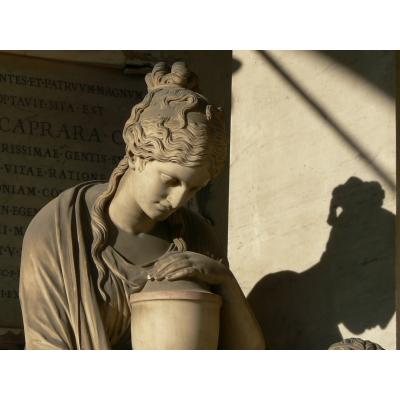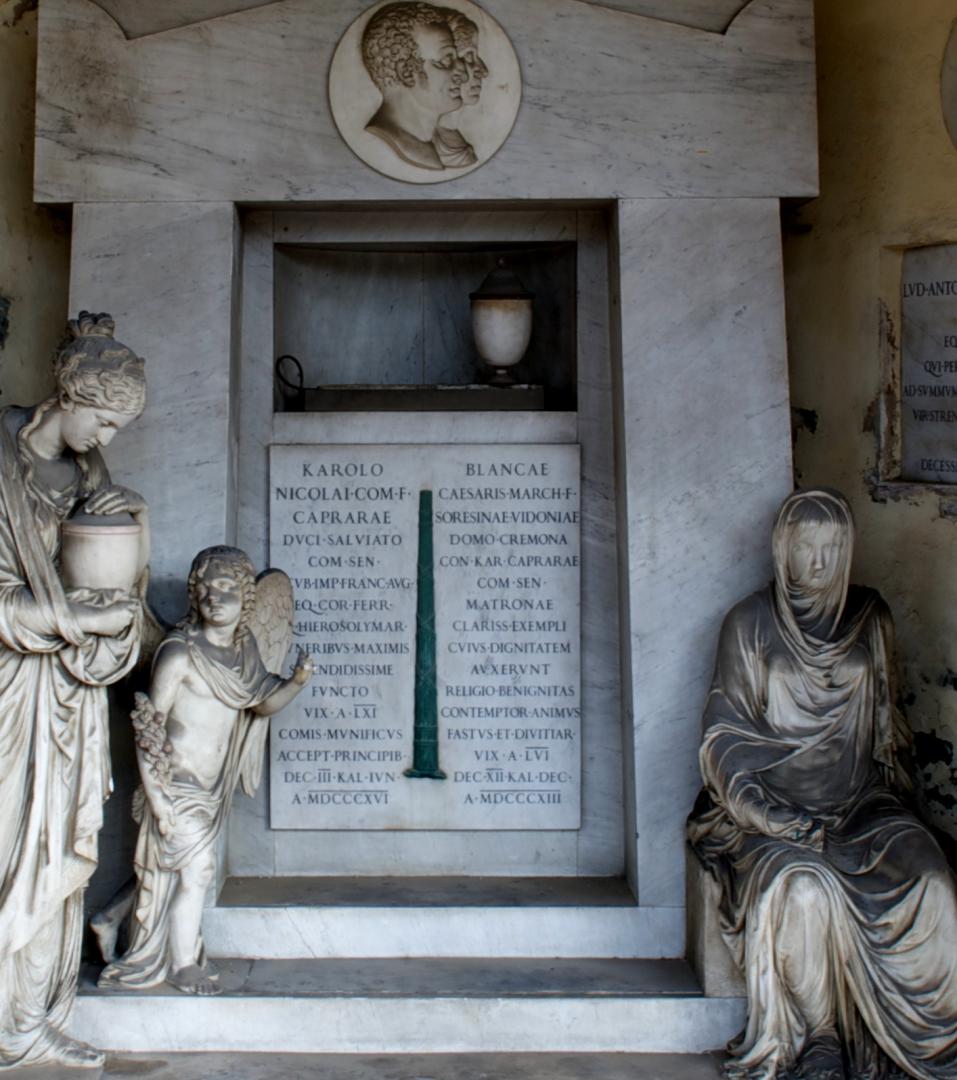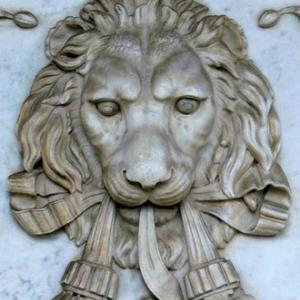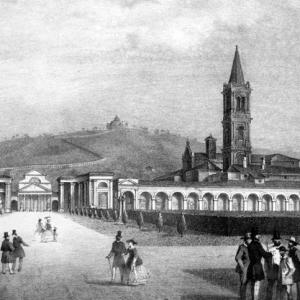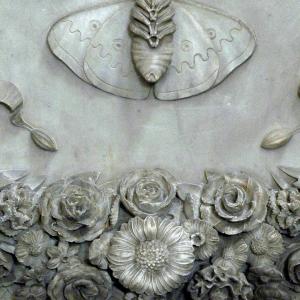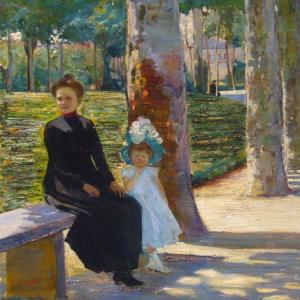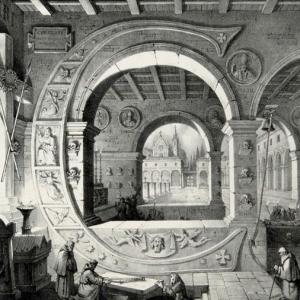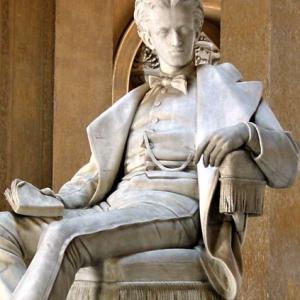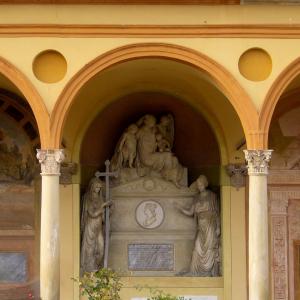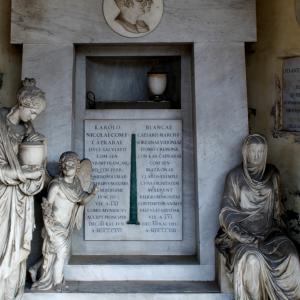Schede
The monument was erected by the noblewoman Vittoria Caprara in memory of her uncle Ludovico Antonio and her parents Bianca and Carlo. At her father's death she decided to transfer his remains from Milan to keep her relatives close by and their memory alive among the public of Bologna. Carlo Caprara (1755-1816) was minister of the Kingdom of Italy, and in 1805 hosted Napoleon at his residence during his visit in Bologna.
The monument, one of the sculptor Giacomo De Maria's masterpieces, fully interprets the desire of the patron to identify and eulogise the deceased, starting with the choice of marble, a precious material that at the time was hard to find in the city due to its exceptionally high costs of import. The complex neoclassical composition has a Canovian style, recalling the structure of the Mausoleum of Maria Christina of Austria in Vienna. In the central part of the composition, De Maria, unlike his master Canova, placed a recess with a plaque and funeral urn. The empty space left beside the urn is intended to be occupied by another that Filial Piety, an ideal representation of Vittoria Caprara, holds in her hands. This figure is preceded by a small spirit of death bearing a cypress branch. At the top of the complex is situated Religion, crowned with bright rays and carrying the cross. At her side is the Bologna lion, another reference to Canova, this time from the monument to Pope Clement XIII. To the right sits Eternity, commonly called by the Bolognese the Veiled, a marble work that was a huge success, becoming a popular model for other commissions, like the Fornasari tomb and that of Levi in the Maggiore Cloister, both made by Giovanni Putti. With reciprocity the two colleagues pay homage to one another in this and other works.




